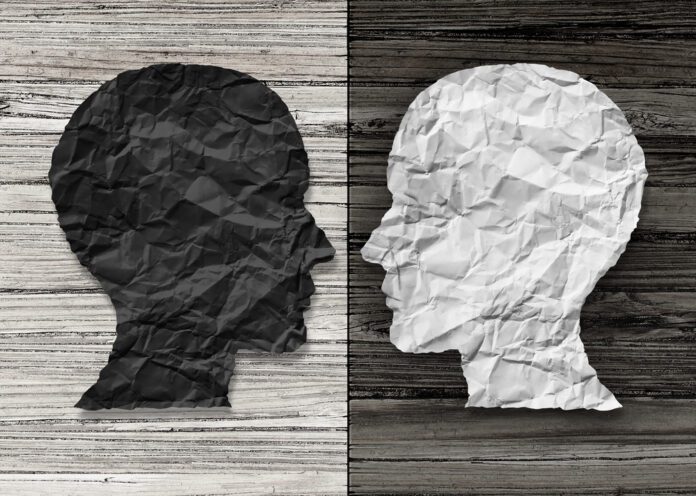Overview
Bipolar disorder (formerly called manic-depressive illness or manic depression) is a mental disorder that causes unusual shifts in mood, energy, activity levels, concentration, and the ability to carry out day-to-day tasks.
There are three types of bipolar disorder. All three types involve clear changes in mood, energy, and activity levels. These moods range from periods of extremely “up,” elated, irritable, or energized behavior (known as manic episodes) to very “down,” sad, indifferent, or hopeless periods (known as depressive episodes). Less severe manic periods are known as hypomanic episodes.
•Bipolar I Disorder— defined by manic episodes that last at least 7 days, or by manic symptoms that are so severe that the person needs immediate hospital care. Usually, depressive episodes occur as well, typically lasting at least 2 weeks. Episodes of depression with mixed features (having depressive symptoms and manic symptoms at the same time) are also possible.
•Bipolar II Disorder— defined by a pattern of depressive episodes and hypomanic episodes, but not the full-blown manic episodes that are typical of Bipolar I Disorder.
•Cyclothymic Disorder (also called Cyclothymia)— defined by periods of hypomanic symptoms as well as periods of depressive symptoms lasting for at least 2 years (1 year in children and adolescents). However, the symptoms do not meet the diagnostic requirements for a hypomanic episode and a depressive episode.
Sometimes a person might experience symptoms of bipolar disorder that do not match the three categories listed above, which is referred to as “other specified and unspecified bipolar and related disorders.” Bipolar disorder is a mental illness marked by extreme changes in mood from high to low, and from low to high.
Cause
Very little is known for certain about the genetics of bipolar disorder. Studies suggest that variations in many genes, each with a small effect, may combine to increase the risk of developing the condition. However, most of these genetic variations have been identified in single studies, and subsequent research has not verified them. It is unclear what contribution each of these changes makes to disease risk. Some of the genetic changes associated with bipolar disorder have also been found in people with other common mental health disorders, such as schizophrenia. Understanding the genetics of bipolar disorder and other forms of mental illness is an active area of research.
Studies suggest that nongenetic (environmental) factors also contribute to a person’s risk of developing bipolar disorder. Stressful events in a person’s life, such as a death in the family, can trigger disease symptoms. Substance abuse and traumatic head injuries have also been associated with bipolar disorder. It seems likely that environmental conditions interact with genetic factors to determine the overall risk of developing this disease.
Symptoms
The bipolar affective disorder is characterized by extreme mood swings. These can range from extreme highs (mania) to extreme lows (depression).
Episodes of mania and depression often last for several weeks or months.
People having a manic episode may:
•Feel very “up,” “high,” elated, or irritable or touchy
•Feel “jumpy” or “wired”
•Have a decreased need for sleep
•Have a loss of appetite
•Talk very fast about a lot of different things
•Feel like their thoughts are racing
•Think they can do a lot of things at once
•Do risky things that show poor judgment, such as eat and drink excessively, spend or give away a lot of money, or have reckless sex
•Feel like they are unusually important, talented, or powerful
People having a depressive episode may:
•Feel very sad, “down,” empty, worried, or hopeless
•Feel slowed down or restless
•Have trouble falling asleep, wake up too early, or sleep too much
•Experience increased appetite and weight gain
•Talk very slowly, feel like they have nothing to say, forget a lot
•Have trouble concentrating or making decisions
•Feel unable to do even simple things
•Have little interest in almost all activities, a decreased or absent sex drive, or an inability to experience pleasure (“anhedonia”)
•Feel hopeless or worthless, think about death or suicide
Treatment
Treatment for bipolar disorder aims to reduce the severity and number of episodes of depression and mania to allow as normal a life as possible.
Most people with bipolar disorder can be treated using a combination of different treatments.
These can include 1 or more of the following:
• medicine to prevent episodes of mania and depression – these are known as mood stabilizers, and you take them every day on a long-term basis
• medicine to treat the main symptoms of depression and mania when they happen
• learning to recognize the triggers and signs of an episode of depression or mania
• psychological treatment – such as talking therapies, which help you deal with depression and provide advice on how to improve relationships
• lifestyle advice – such as doing regular exercise, planning activities you enjoy that give you a sense of achievement, and advice on improving the diet and getting more sleep.
Exams and Tests
To diagnose bipolar disorder, the health care provider may do some or all of the following:
• Ask whether other family members have bipolar disorder
• Ask about your recent mood swings and for how long you have had them
• Perform a thorough exam and order lab tests to look for other illnesses that may be causing symptoms that resemble bipolar disorder
• Talk to family members about your symptoms and overall health
• Ask about any health problems you have and any medicines you take
• Watch your behavior and mood
Source
https://www.nimh.nih.gov/health/topics/bipolar-disorder https://www.nhs.uk/conditions/bipolar-disorder



